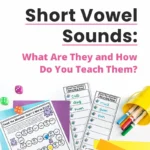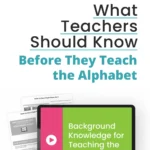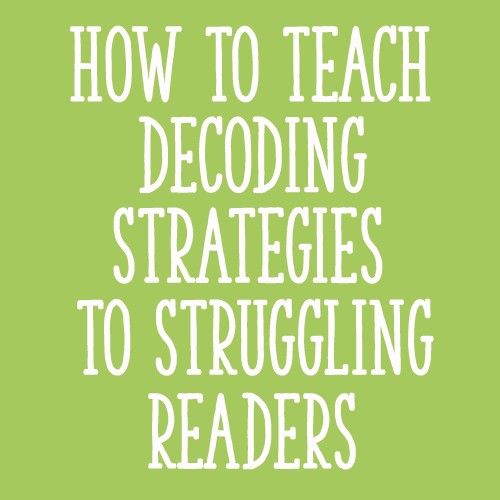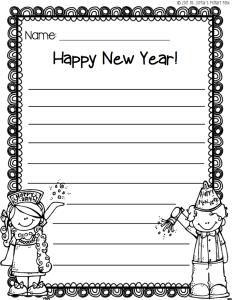CVC words are usually the first words kids learn to read! They are simple words with usually three letters, made up of a consonant (C), short vowel (V), and another consonant (C). Even though these words are short, it can take a LOT of practice for little ones to learn to read them!
In this blog post, I’ll explain how to teach CVC words, provide a short list of CVC words, and share tons of fun activities that are a great way for young readers to practice CVC words. Make sure to read all the way to the bottom of this post, because there are lots of different ideas here!
How to Teach CVC Words
Build Letter Fluency
The first step in teaching kids to read CVC words is actually to teach them the alphabet! To read a CVC word, a child has to be able to quickly recognize the individual letters in the word. Then they must produce the letter sounds quickly enough so that they can blend (put the individual sounds together) to read the word. For this reason, focusing on letter sound fluency is a great way to get kids ready to read CVC words.
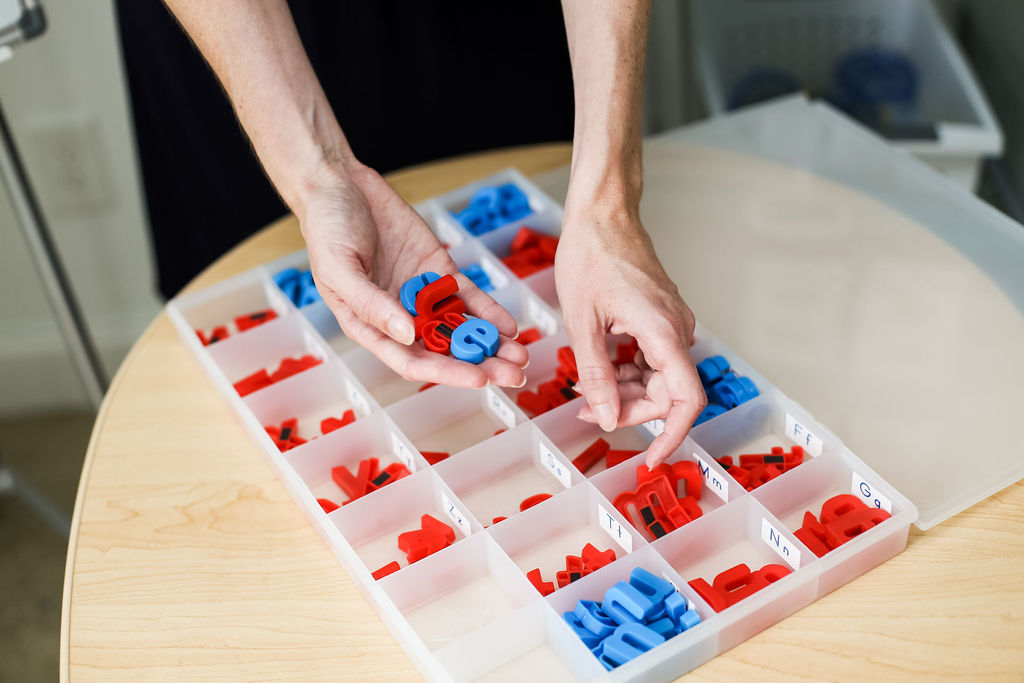
Teach CVC Words As You Teach the Alphabet
Many teachers think that kids need to know all of their alphabet before learning to read CVC words – but this isn’t correct! It’s actually a great idea to start modeling how to blend to read CVC words as you teach the alphabet.
For example, if students have learned the letters a, t, and m, you can show them how to sound out and read the words “at” and “mat.” At this stage, you will model how to say each sound and put the sounds together. The kids can join in once they see how to do it. Here is what it might sound like:
Teacher (sliding finger underneath letter cards): Listen while I say the sounds and blend to read this word: /mmm/ /ăăă/, /mă/, /t/, mat. Now let’s do it together.
Teacher and Students: /mmm/ /ăăă/, /mă/, /t/, mat.
Teacher: Good! Now I’ll point to each letter and you do it without me.
Students: /mmm/ /ăăă/, /mă/, /t/, mat.
Teacher: Great job! What word did you read?
Students: Mat!
Teacher: Right! The little boy took a nap on his mat.
You can do this activity (often called a “blending drill”) with an entire class, in small groups, or even one-on-one. You only need to practice with 1-2 words when you are first getting started.
This blending drill really helps children understand how to break down CVC words to read them. This process also reinforces letter sounds. The more kids can apply what they are learning (letter sounds, in this case), the better they become with the skill. And they also start to learn the alphabetic principle, the understanding that we can use letters to represent sounds, and we use those sounds to read and spell words.
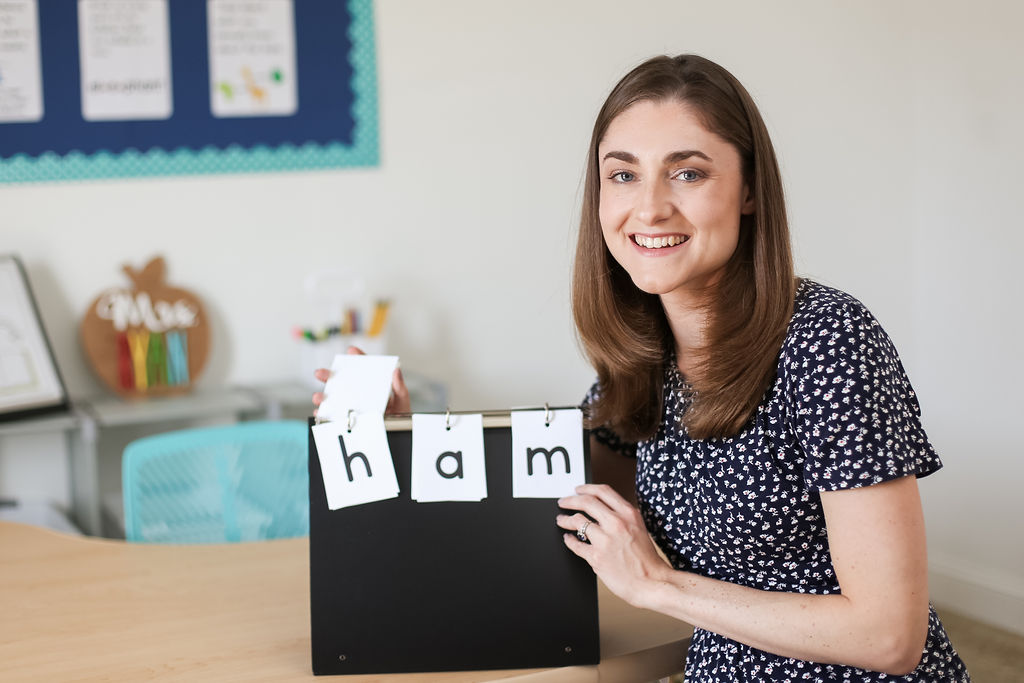
Try Vowel-Consonant Words First
In the example above, I mentioned that kids can also read the word “at.” You may have noticed that “at” isn’t truly a CVC word because it doesn’t follow the consonant-vowel-consonant pattern!
But that actually brings me to my next point: reading vowel-consonant words (like “at,” “in,” “if,” “on,” etc.) can actually be the easiest way to help kids ease into CVC words. Because there are only 2 sounds in vowel-consonant words, it is often easier for kids to begin here.
Practice Blending Without Letters
We’ve been talking about having kids blend sounds together, which is exactly what they need to do to read CVC words! But you’ll also want to have kids practice blending sounds without any letters. This is an important phonemic awareness skill.
For example, you might say, “The sounds in my mystery word are /p/ /i/ /g/. Say those sounds.” (The children repeat the sounds.) “What’s my mystery word?” Students should respond “pig.”
When kids have to recall letter sounds and blend them together to read the word, that’s a lot of “mental load” for young learners! We can help them get better by also having them practice blending without any letters (which should be a little easier). That said, you don’t want to wait until kids can blend “perfectly” without any letters. You can work on blending with letters and without letters at different times of the day.
Start with Words that Begin with Continuous Sounds
Continuous sounds are those that can be produced in the mouth without a “stop” of air. It is usually easiest for kids to blend words that begin with these particular consonants: f, l, m, n, r, s, v, z.
You might choose words like “mat” and “ran” rather than “dot” or “tub.” Of course, students will need to learn to read words that begin with non-continuous sounds. Words that begin with continuous sounds are just a good starting point!
Note: the vowel sounds are also continuous. So if you start with vowel-consonant words like “at,” you will still be using words that begin with continuous sounds.
Have Students Blend Two Parts at a Time
It can be challenging for young kids to remember all 3 sounds so they can blend them together! So, if blending like this isn’t working…
/r/ /a/ /t/, rat,
try blending like this:
/r/ /a/, /ra/, /t/, rat.
This way, the child is just putting two individual phonemes (sounds) together at a time.
Another option is to make sure the child “smoothes” the sounds together, like this:
/rrrrr/ /aaaaa/ /t/, rat.
Again, this is much easier to do with words that start with continuous consonant sounds.
CVC Word Lists
Here are some examples of simple, three-letter words with short vowels that you might start with:
Short a words: cab, gab, lab, bad, dad, had, mad, pad, sad, bag, lag, rag, sag, tag, wag, ham, jam, ram, yam, ban, can, fan, man, pan, ran, tan, van, cap, gap, lap, map, nap
Short e words: wed, led, beg, leg, peg, hem, den, hen, men, pen, ten, bet, get, jet, let, met, net, pet, set, wet, yet
Short i words: bib, fib, rib, bid, did, hid, kid, lid, rid, big, dig, fig, gig, jig, pig, rig, wig, dim, him, rim, bin, din, fix, kin, pin, tin, win, dip, hip, lip, rip, sip, tip, zip, bit, fit, hit, kit, lit, pit, sit, fix, mix, six
Short o words: cob, job, mob, rob, sob, cod, nod, pod, rod, bog, dog, fog, hog, jog, log, mom, hop, mop, pop, top, cot, dot, got, hot, jot, lot, not, pot, rot, tot, box, fox
Short u words: cub, hub, rub, sub, tub, bud, dud, mud, bug, dug, hug, jug, lug, mug, pug, rug, tug, gum, hum, mum, sum, bun, fun, nun, pun, run, sun, cup, pup, bus, but, cut, gut, hut, nut, rut, yum
Remember, focus first on the examples of CVC words that begin with continuous sounds, especially if a child is struggling or just learning to blend.
CVC Word Activities
Now let’s get to the really fun part – the activities! There are many fun ways to practice CVC words; it doesn’t have to be tedious by any means. These activities are great for small group, literacy centers, or other independent practice. They can even be completed with parents at home!
CVC Word Games
Games are so much fun that kids don’t even notice that they’re working hard to practice!
These no-prep phonics games (click HERE for Kindergarten or HERE for 1st grade) have kids practice reading and writing CVC words. As you can see, there are board games and other variations like “spin and cover” and “roll and read.”
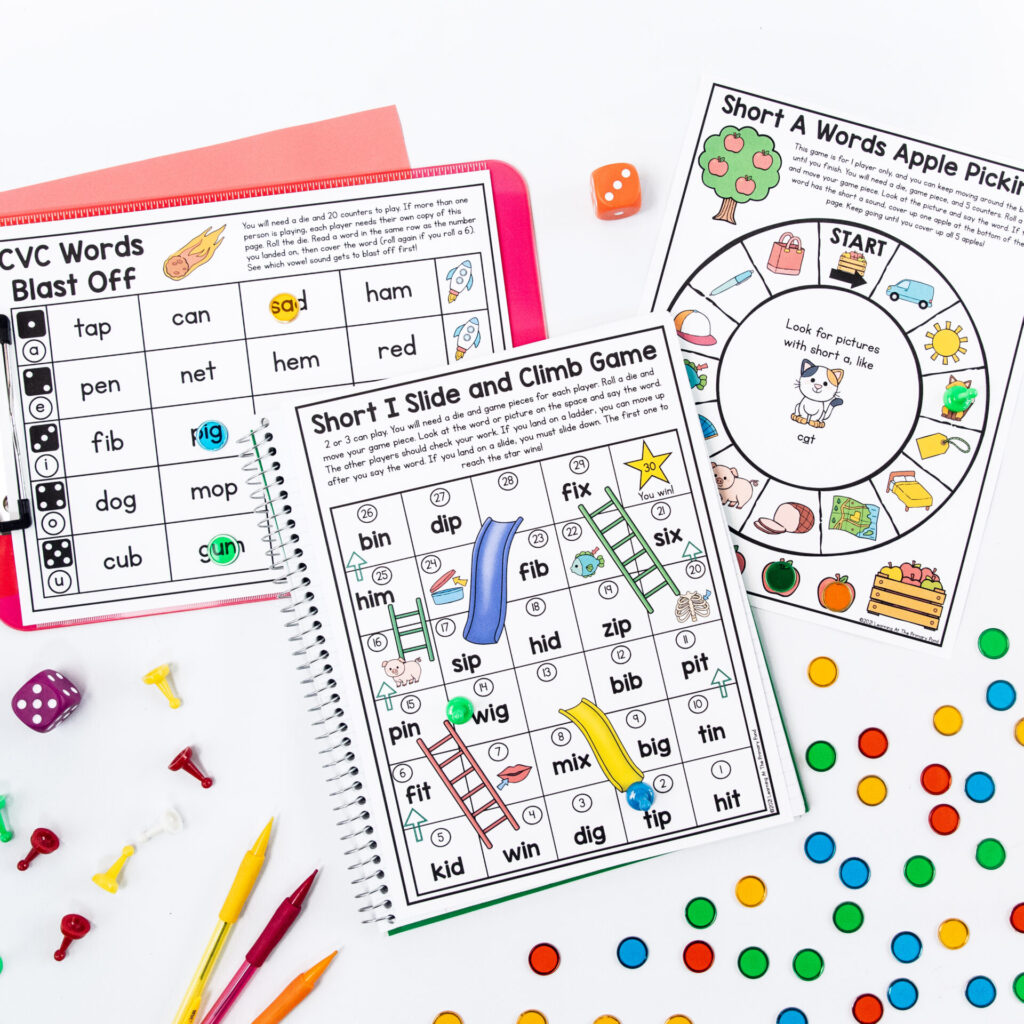

CVC Word Blending Lines
These CVC word printables get kids reading individual words and complete sentences with CVC words. Blending lines have been getting more attention with the recent discussions around the Science of Reading – and for good reason!
If you look “across” a line, you can see that, many times, just one part of the word changes. For example, “fun” becomes “nun,” which then becomes “bun.” This helps kids learn to notice small differences in words. When two parts of the word stay the same, this builds kids’ fluency and helps them learn to recognize that pattern more quickly in future words.
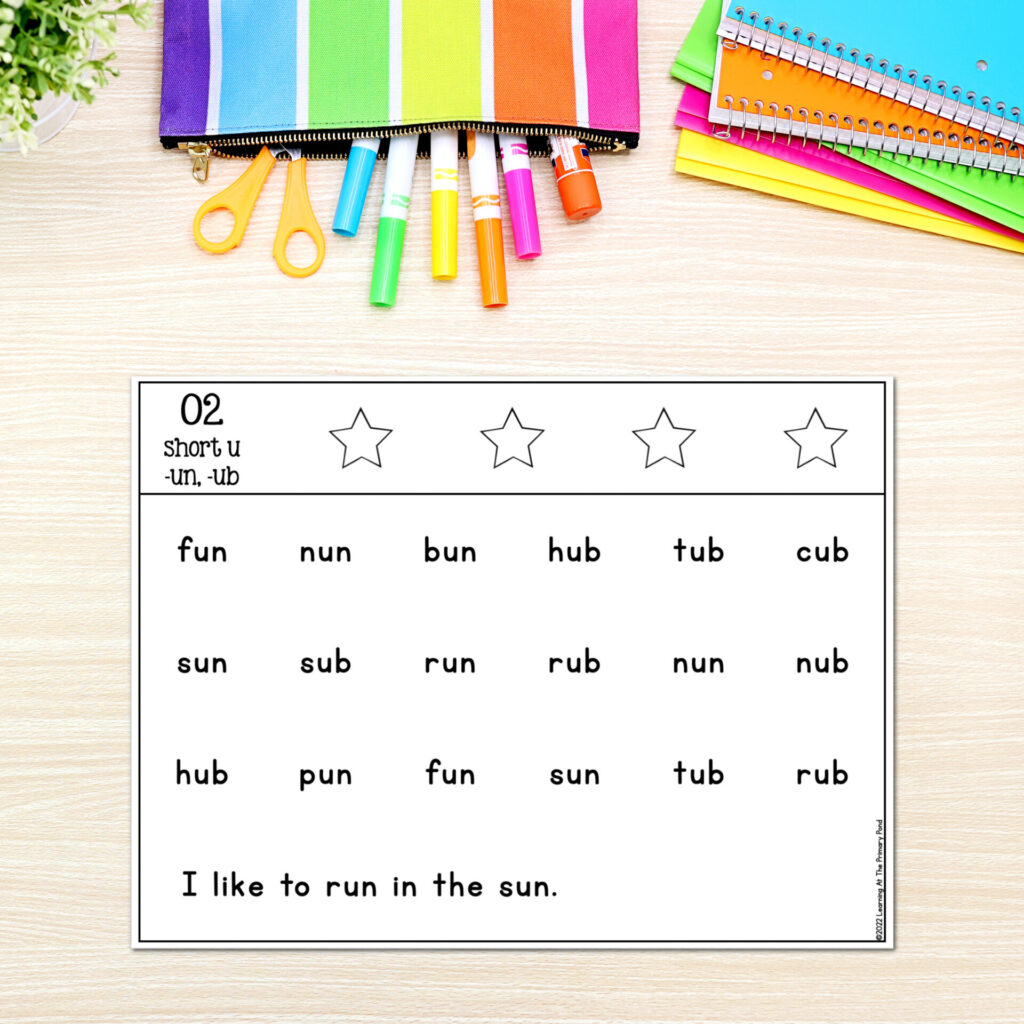
Take a look at my CVC words blending lines here!
CVC Word Boom Cards
Want to add some digital fun? These CVC word Boom cards are a great way for kids to practice, because they’re self-correcting! This means that kids get immediate feedback in the moment, as they’re reading and spelling simple CVC words.
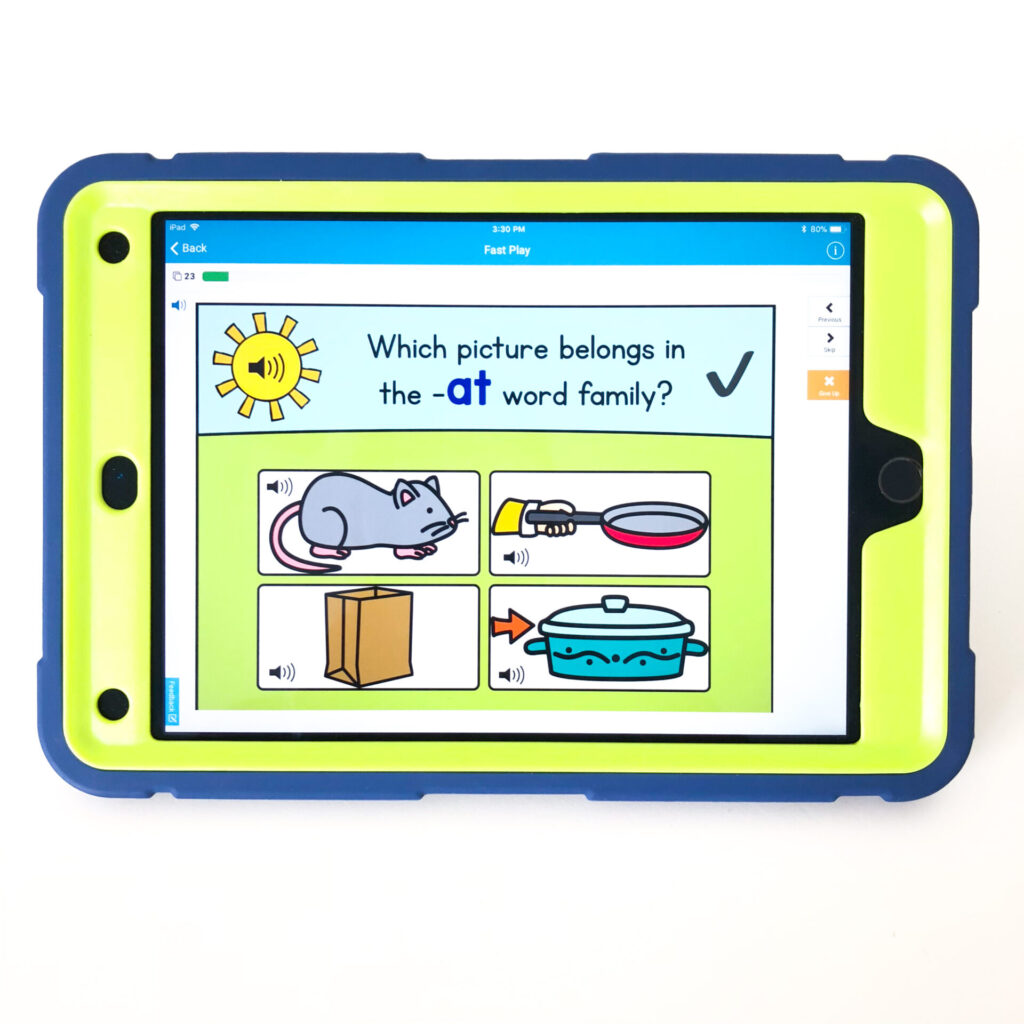
In the photo, you can see that the Boom cards also address short vowel word families to help students see patterns as they learn to read more CVC words.
Check out my CVC words phonics Boom cards here!
CVC Word Decodable Texts
Reading individual words is a great place to start, but kids also need to learn to read words in context. These decodable texts are a printable resource that are easy to use – and kids love them! They include simple CVC words AND basic high frequency words.
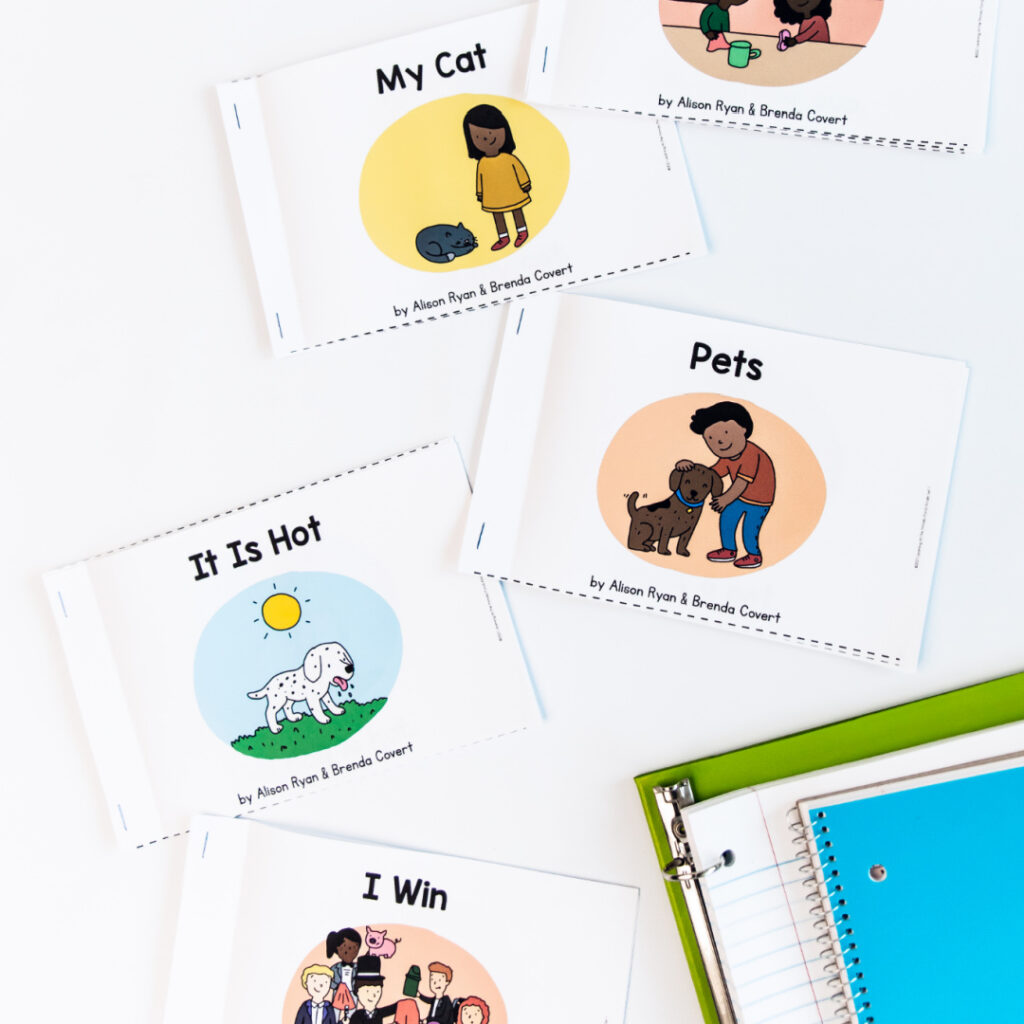
These decodable texts are professionally illustrated and super engaging for kids. You can grab them here!
The Next Step After CVC Words
Wondering what comes after CVC words? Well, it depends upon what you’ve taught so far. Kids may be ready to work on consonant digraphs or consonant blends – still words with short vowel sounds. Use either of those links to read more about these skills!
Before you leave, here are all my CVC word printables links again:
- No-prep CVC word games (Kindergarten)
- No-prep CVC word games (1st grade)
- CVC word blending lines
- CVC word Boom cards
- CVC word decodable readers
Want to save this post for later? Pin the image below to one of your Pinterest boards!

Happy teaching!

